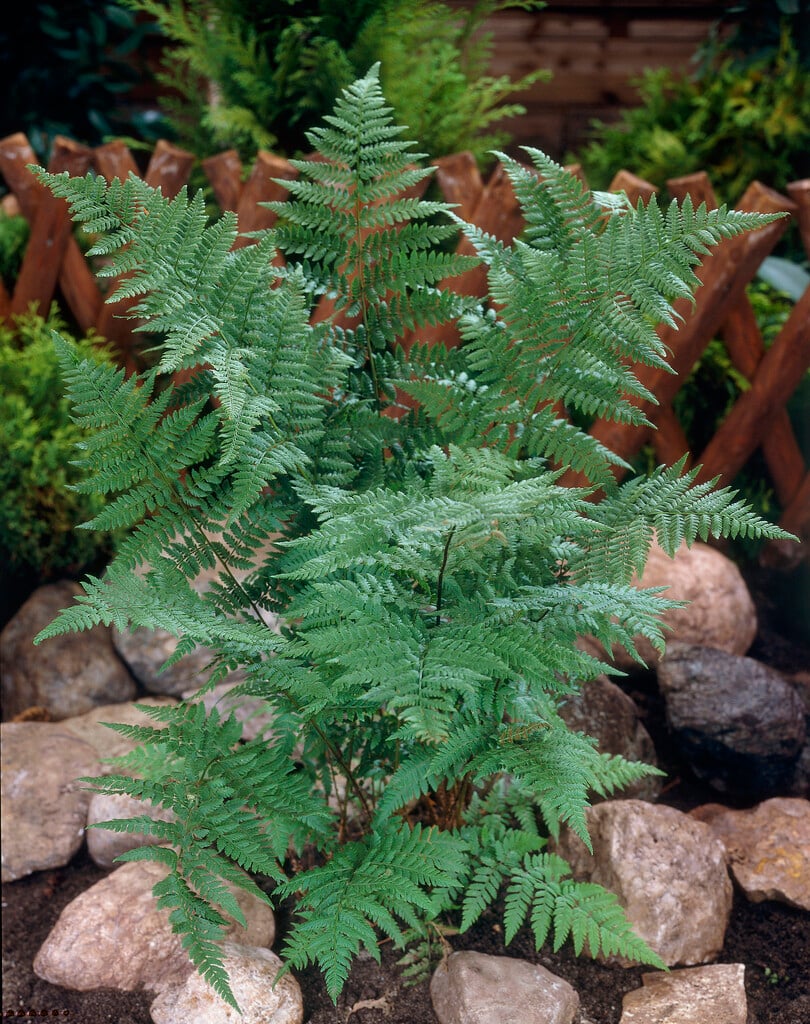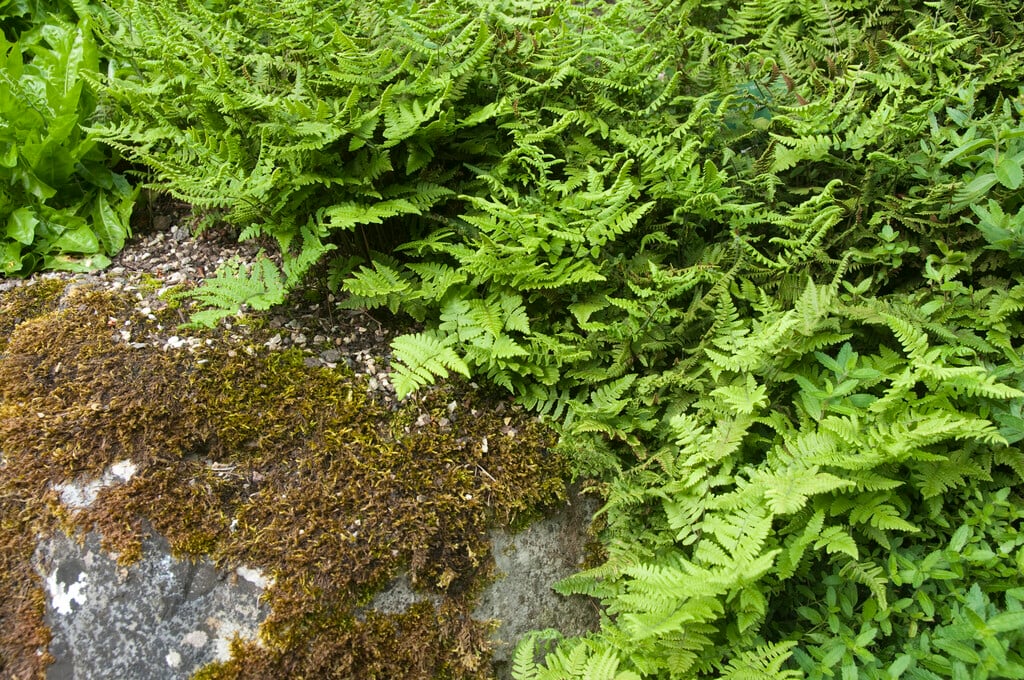Not the plant you're looking for? Search over 300,000 plants
Ferns
Size
Ultimate height
0.5–1 metresTime to ultimate height
5–10 yearsUltimate spread
0.5–1 metresGrowing conditions
Clay
Loam
Chalk
Moisture
Moist but well–drainedpH
Neutral, Acid, AlkalineColour & scent
| Stem | Flower | Foliage | Fruit | |
| Spring | Green | |||
|---|---|---|---|---|
| Summer | Green | |||
| Autumn | Green | |||
| Winter | Green |
Position
- Full shade
- Partial shade
Aspect
West–facing or East–facing or North–facing
Exposure
Sheltered Hardiness
H5Botanical details
- Family
- Dryopteridaceae
- Native to GB / Ireland
- Yes
- Foliage
- Semi evergreen
- Habit
- Clump forming
- Genus
Dryopteris can be deciduous, semi-evergreen or evergreen ferns, with stout, erect or decumbent rhizomes and shuttlecock-like rosettes of lance-shaped to ovate, pinnately divided fronds
- Name status
Correct
- Plant range
- N Temperate
How to grow
Cultivation
Best grown in moist but free draining soil in a sheltered shaded or semi shaded location. For more information see our advice page how to grow ferns.
Propagation
Propagate by division or spores
Suggested planting locations and garden types
- Cottage and informal garden
- Low Maintenance
- Underplanting of roses and shrubs
- Flower borders and beds
Pruning
Remove any dead or damaged fronds in late autumn or early spring before new growth emerges.
Pests
Generally pest-free
Diseases
Generally disease-free
Get involved
The Royal Horticultural Society is the UK’s leading gardening charity. We aim to enrich everyone’s life through plants, and make the UK a greener and more beautiful place.

